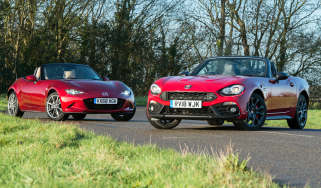This is the World Rally Car of 2017
WRC cars will get faster and more dramatic from 2017 – but don’t expect any road-going rally specials
The World Rally Championship will change significantly from 2017, as the sport announces the outline principles of its technical regulations from 2017 onwards.
And as the computer-generated image shows, it could result in some spectacularly exuberant shapes on the world’s rally stages.
Nostalgia is a powerful drug, but judged against rallying’s heyday from the 1960s to the early 2000s, the current WRC cars struggle to excite long-time fans. More technologically advanced than ever, and faster down the stages, the current cars demand a smoother, less flamboyant driving style than their forebears.
Just such a style saw Sebastien Loeb take an incredible nine WRC titles, but from a spectator’s perspective, the lack of drama in the series is at odds with its past glories.
The new regulations could change that, visually at least. For a start, power will rise from the current 300bhp or so to 380bhp, thanks to a larger 36mm turbo restrictor.
Combined with a new aerodynamics package, which allows a larger rear wing, 55mm increase in width and greater overhangs at the front and rear, it’ll be the closest WRC has got to Group B since the legendary class was banned in 1987.
In addition, the 2017 cars will be 25kg lighter, and use electronically-controlled centre differentials.
The aim, says FIA technical director Bernard Niclot, is to ‘make the car spectacular’, whilst being mindful of costs and maintaining – if not increasing – safety.
Feedback from the drivers is already positive. Current champion Sebastien Ogier told the official WRC website, ‘As a racing driver you are always looking for more performance…the extra power will definitely make the driving more spectacular for the fans.’
What is unlikely to change with the advent of the new regulations is the availability of a true road-going equivalent. Street versions of the Group B monsters are now revered as automotive legends, while Group A homologation regulations gave us some of the 1990s’ best performance cars – Escort Cosworths, Integrale Evos, Imprezas, Lancer Evolutions and Celica GT-Fours.
The new cars might be more dramatic on the stage, but as WRC’s preview image suggests, there’ll be little to link your road-going Fiesta ST with its loose-surface counterpart.



